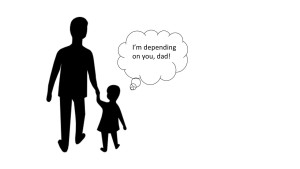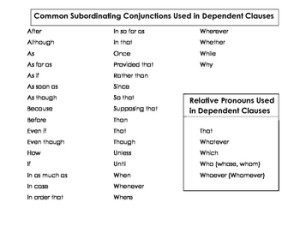I teach a writing lab for the community college I work with, and right now we are working on recognizing Independent and Dependent Clauses. (Yep! College students sometimes have to go waaaaaay back to the basics in order to find sentence fragments within their Composition Essays!)

I like to give my students a visual when thinking about parts of sentences. So the first thing I told them is that I have a one-year-old who is about to start walking. Right now, she is holding on to our hands (or walls, or cabinets, or the dog) to help support her walking. Then I ask them, “Is she an independent walker?” Of course the answer is no. “Why?” Their responses were:
“She can’t stand on her own.”
“She relies on other people or things.”
DING! DING! DING! In order to walk, she is DEPENDENT on other people or things. An INDEPENDENT walker is someone who can stand on his or her own.
I then tell them the same goes for Independent or Dependent clauses! “An Independent Clause is a sentence that can totally stand on its own without any help from other clauses. A Dependent Clause relies on other clauses, or complete sentences, to make sense.”
After reviewing types of each, I gave them a Common Subordinating Conjunctions Cheat Sheet to use in order to find fragments (it also includes the five relative pronouns, but I didn’t go too into detail with those–only so much the brain can handle in an hour!). Then I let them know the secret that if their sentence is starting off with one of the words listed on the cheat sheet and does not express a complete thought, it’s probably a fragment.
I hope this cheat sheet helps your students make sense of Independent and Dependent clauses a little bit better!

